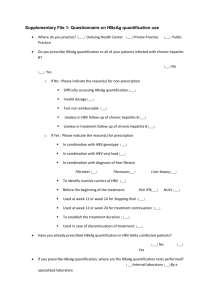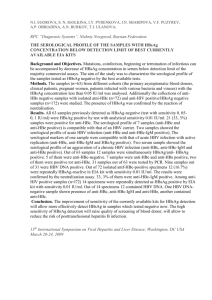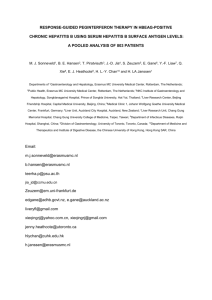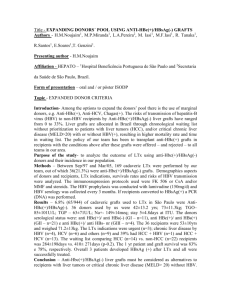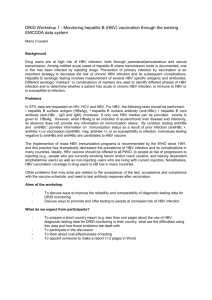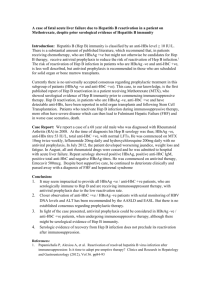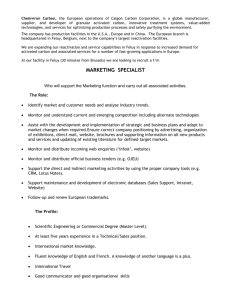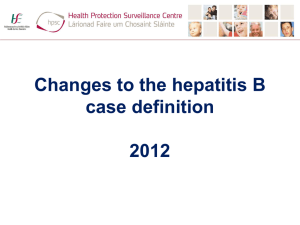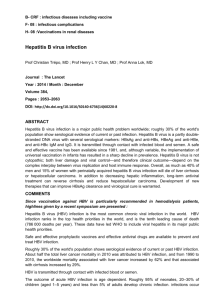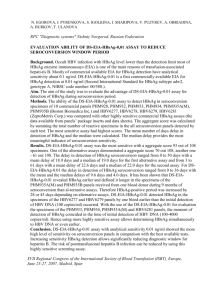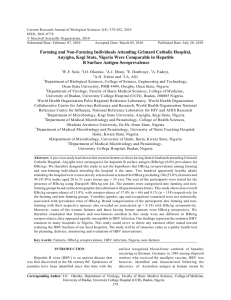Reactivation of Hepatitis B Virus Infection in Renal Transplant
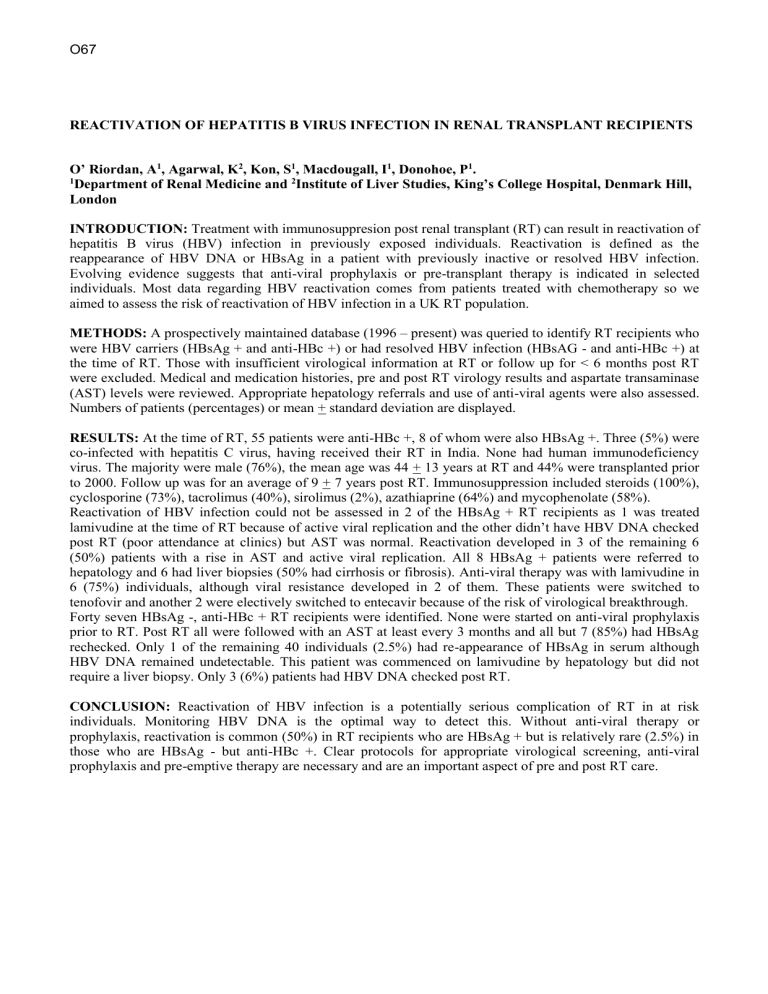
O67
REACTIVATION OF HEPATITIS B VIRUS INFECTION IN RENAL TRANSPLANT RECIPIENTS
O’ Riordan, A 1 , Agarwal, K 2 , Kon, S 1 , Macdougall, I 1 , Donohoe, P 1 .
1 Department of Renal Medicine and 2 Institute of Liver Studies, King’s College Hospital, Denmark Hill,
London
INTRODUCTION: Treatment with immunosuppresion post renal transplant (RT) can result in reactivation of hepatitis B virus (HBV) infection in previously exposed individuals. Reactivation is defined as the reappearance of HBV DNA or HBsAg in a patient with previously inactive or resolved HBV infection.
Evolving evidence suggests that anti-viral prophylaxis or pre-transplant therapy is indicated in selected individuals. Most data regarding HBV reactivation comes from patients treated with chemotherapy so we aimed to assess the risk of reactivation of HBV infection in a UK RT population.
METHODS: A prospectively maintained database (1996 – present) was queried to identify RT recipients who were HBV carriers (HBsAg + and anti-HBc +) or had resolved HBV infection (HBsAG - and anti-HBc +) at the time of RT. Those with insufficient virological information at RT or follow up for < 6 months post RT were excluded. Medical and medication histories, pre and post RT virology results and aspartate transaminase
(AST) levels were reviewed. Appropriate hepatology referrals and use of anti-viral agents were also assessed.
Numbers of patients (percentages) or mean + standard deviation are displayed.
RESULTS: At the time of RT, 55 patients were anti-HBc +, 8 of whom were also HBsAg +. Three (5%) were co-infected with hepatitis C virus, having received their RT in India. None had human immunodeficiency virus. The majority were male (76%), the mean age was 44 + 13 years at RT and 44% were transplanted prior to 2000.
Follow up was for an average of 9 + 7 years post RT. Immunosuppression included steroids (100%), cyclosporine (73%), tacrolimus (40%), sirolimus (2%), azathiaprine (64%) and mycophenolate (58%).
Reactivation of HBV infection could not be assessed in 2 of the HBsAg + RT recipients as 1 was treated lamivudine at the time of RT because of active viral replication and the other didn’t have HBV DNA checked post RT (poor attendance at clinics) but AST was normal. Reactivation developed in 3 of the remaining 6
(50%) patients with a rise in AST and active viral replication. All 8 HBsAg + patients were referred to hepatology and 6 had liver biopsies (50% had cirrhosis or fibrosis).
Anti-viral therapy was with lamivudine in
6 (75%) individuals, although viral resistance developed in 2 of them. These patients were switched to tenofovir and another 2 were electively switched to entecavir because of the risk of virological breakthrough.
Forty seven HBsAg -, anti-HBc + RT recipients were identified. None were started on anti-viral prophylaxis prior to RT. Post RT all were followed with an AST at least every 3 months and all but 7 (85%) had HBsAg rechecked. Only 1 of the remaining 40 individuals (2.5%) had re-appearance of HBsAg in serum although
HBV DNA remained undetectable. This patient was commenced on lamivudine by hepatology but did not require a liver biopsy. Only 3 (6%) patients had HBV DNA checked post RT.
CONCLUSION: Reactivation of HBV infection is a potentially serious complication of RT in at risk individuals. Monitoring HBV DNA is the optimal way to detect this. Without anti-viral therapy or prophylaxis, reactivation is common (50%) in RT recipients who are HBsAg + but is relatively rare (2.5%) in those who are HBsAg - but anti-HBc +. Clear protocols for appropriate virological screening, anti-viral prophylaxis and pre-emptive therapy are necessary and are an important aspect of pre and post RT care.
